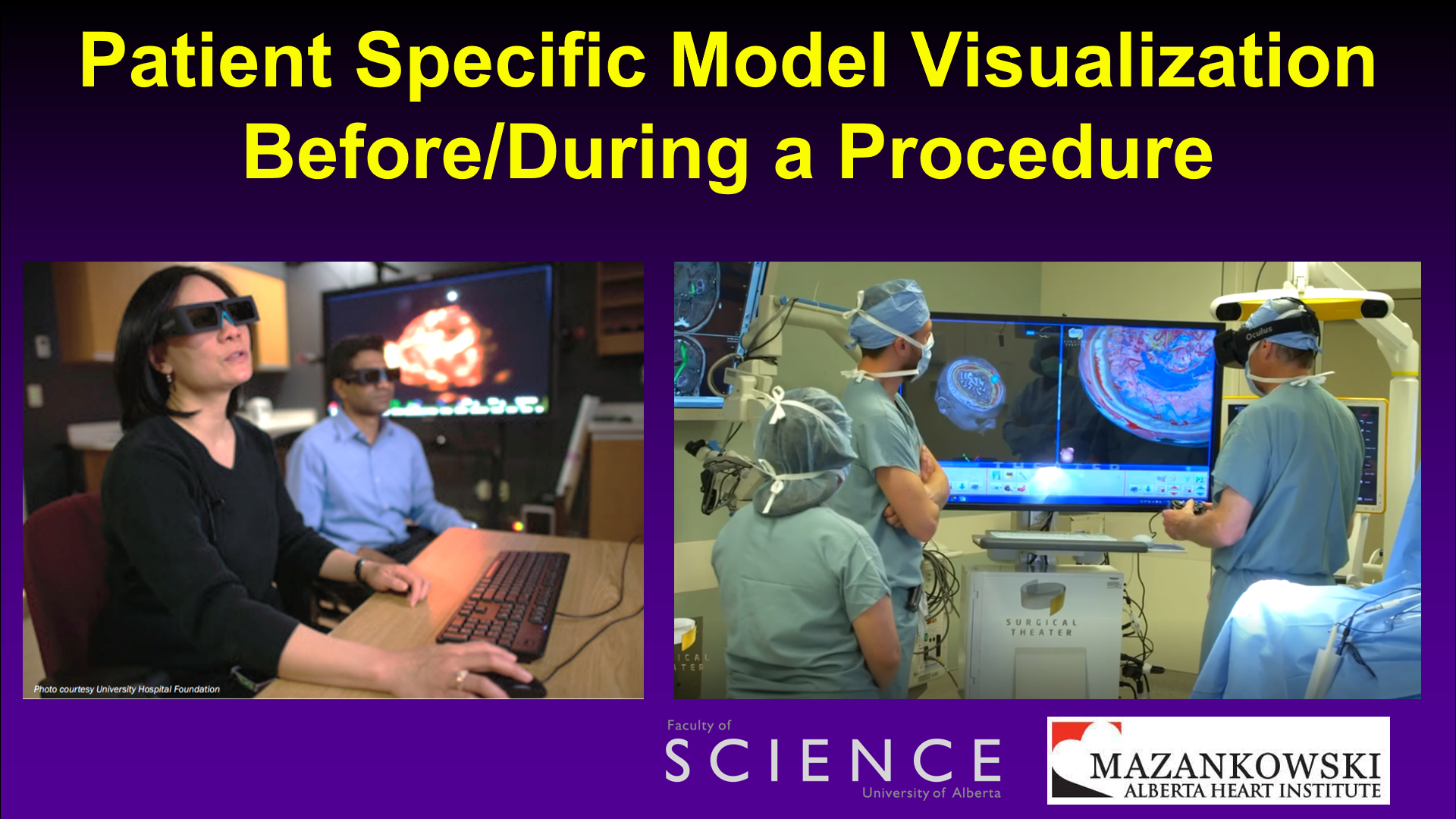Project in collaboration with the UofA Radiology and Diagnostic Imaging Department
Our aims are 1) to establish a Research Centre for Collaborative Visualization and Processing of Real-time Medical Volumetric Data located at the University of Alberta, and 2) to develop a fully integrated Alberta Visualization Centre for Medical Imaging. The centre is dedicated to the collaborative real-time visualization and processing of medical volumetric data such as temporally-resolved Magnetic Resonance Imaging (MRI), velocity-encoded MRI, and cine-computed tomography (CT) as well as static volumetric data. The strategic need for research in this field is becoming essential as new CT and MRI scanners capable of producing large volumetric data in real-time are now available commercially and several of these machines are being installed in the University of Alberta and Stollery Hospitals. These 3-D imaging machines are truly a breakthrough in diagnostic imaging as they allow real-time imaging of dynamic organs such as the heart and the lung.
The main research project focuses primarily on cardiac sciences, particularly in the area of congenital heart disease. Cardiovascular diseases are the single most frequent cause of death in North America for both men and women. Early diagnosis and treatment is crucial in order to reduce mortality and to improve patients’ quality of life. Traditional open heart surgery involves a sternotomy and the use of a heart and lung machine, whereas newer surgical techniques use minimally-invasive approaches, often supported by robotics. Interventional procedures using a vascular catheter have also taken on the role of treatment that was previously surgical Under these conditions, high-quality visualization, integrating real-time echocardiography with dynamic MR or CT volume data, are important for pre-surgical and pre-interventional planning, and also visualization during these procedures. For some specific diseases, such as multiple ventricular septal defects and double outlet right ventricle, we will focus our research on the clinical pre-operative decision-making process. Through a close collaboration between the Departments of Radiology and Diagnostic Imaging, Cardiovascular surgery, and Pediatric Cardiology, TRLabs, and the Advanced Man Machine Interface Laboratory, clinical studies assessing the utility and accuracy of real-time rendering systems will be performed during this project with assessment by the cardiovascular surgeons and interventional cardiologists.
The proposed research program focuses on collaborative visualization of real-time volumetric data to serve the medical imaging community in diagnostic and the surgical training and planning. This will allow us to create a unique expertise in the processing of real-time information produced by state-of-the-art diagnostic imaging machines. This project fits very well with one of the priorities of the SERVIER Virtual Cardiac Center at the Mazenkowski heart institute. This project will have a strategic impact not only on diagnostic imaging but also on surgical planning and teaching through the use of simulations based on real-time data. The five major research foci are:
- Project I: Real-time volumetric rendering of temporal datasets
- Project II: Hyper-resolution displays for clinical radiology
- Project III: Collaborative tele-immersive visualization of real-time radiological data
- Project IV: Simulation of needle insertion for percutaneous biopsy using in-vivo measurements
- Project V: Validation through clinical studies in cardiac sciences
The infrastructure necessary for this research program is paid by an industry-government consortium composed of Servier Canada, CISCO Systems, and the Government of Alberta.
